
Fig. 2.1. Thoughts on the universality of cartoon imagery by Scott McCloud, Understanding Comics: The Invisible Art (New York: HarperPerennial, 1994; print; 31).
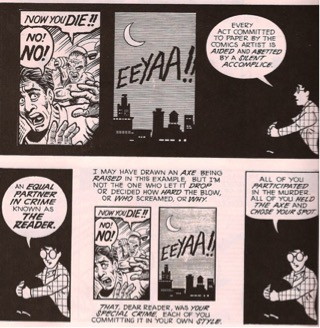
Fig. 2.2. McCloud discusses the reader’s agency in Understanding Comics: The Invisible Art (New York: HarperPerennial, 1994; print; 68).

Fig. 2.3. The negotiation of time, space, and narrative in Scott McCloud’s Understanding Comics: The Invisible Art (New York: HarperPerennial, 1994; print; 69).
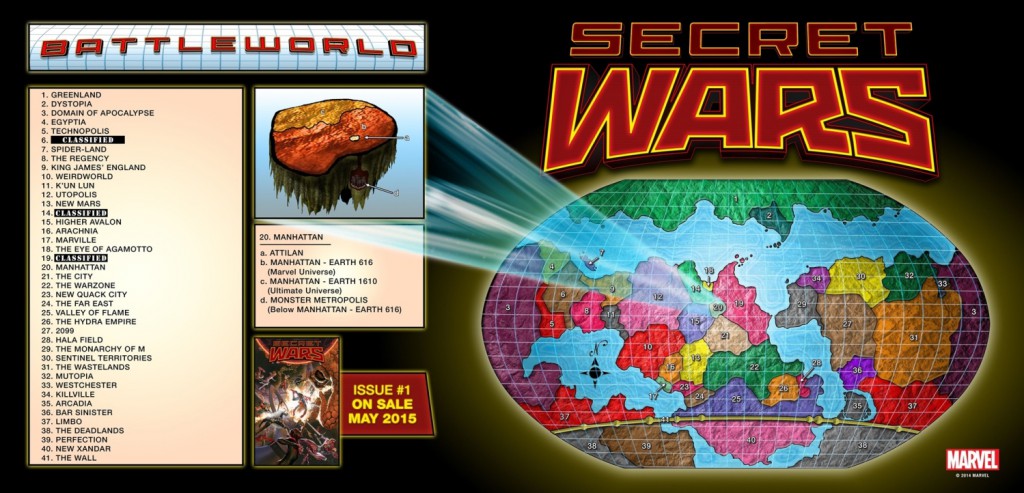
Fig. 2.4. Map promoting Marvel’s 2015-2016 event Secret Wars.
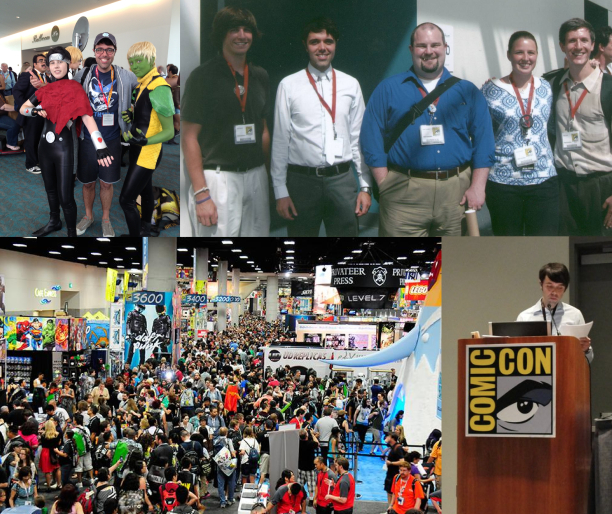
Fig. 2.5. Photos from San Diego Comic-Con International, 2009-2014.
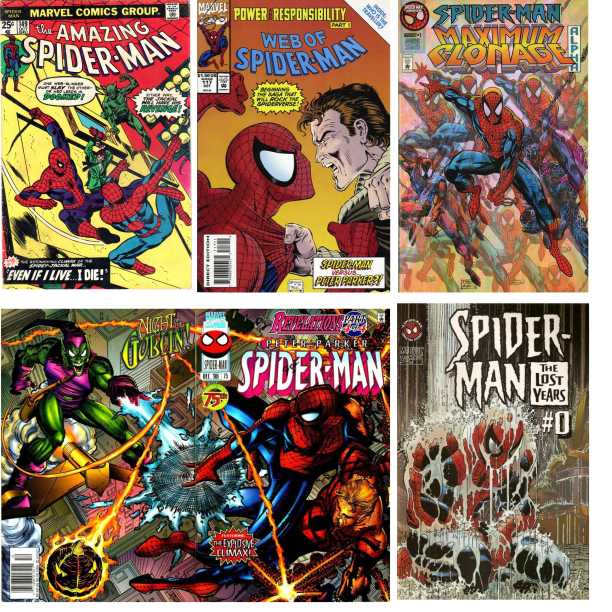
Fig. 2.6. Spider-Clones. Clockwise from top left: a.) Cover of The Amazing Spider- Man #149 (1975), the genesis of the Spider-Man clone, b.) Cover of Web of Spider- Man #117 (1994) that launched the 1990s Clone Saga, c.) Cover of Spider-Man Maximum Clonage Alpha #1 (August 1995), d.) Cover of Spider-Man: The Lost Years #1 (1996), a spile telling the origin of the Spider-Man clone, e.) Front and back covers of Peter Parker: Spider-Man #75 (1996) the finale of the 90s Clone Saga.
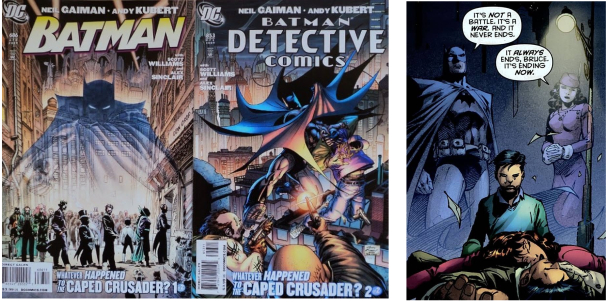
Fig. 2.7. Whatever Happened to the Caped Crusader? (Left) Covers of Batman #686 (2009) and Detective Comics #853 (2009) where “Whatever Happened to the Caped Crusader?” was first serialized. (Right) Interior art by Andy Kubert featuring Batman and Martha Wayne.
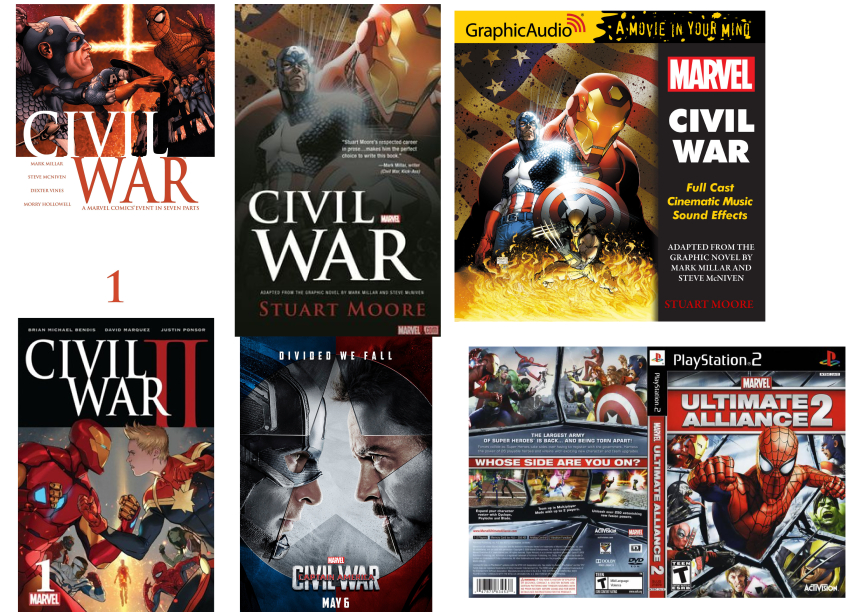
Fig. 2.8. The transmedia Civil War. Clockwise from top left: a.) Cover of Marvel’s Civil War #1 (2006), b.) Cover of the novelization of Civil War by Stuart Moore (2013), c.) Promotional material for Graphic Audio’s full cast audio book based on Civil War (2014), d.) Packaging for the video game Marvel Ultimate Alliance 2 (2009), e.) Promotional poster for forthcoming Captain America: Civil War (2016), f.) Promotion material for Civil War II from Marvel Comics in 2016.
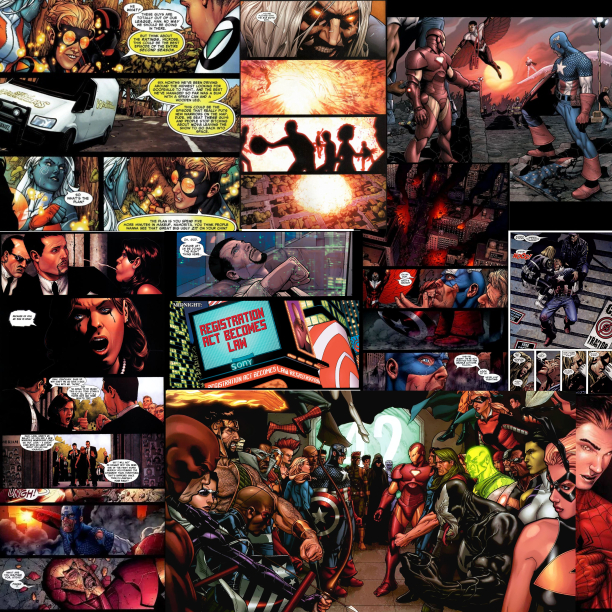
Fig. 2.9. Collage from Marvel’s Civil War.
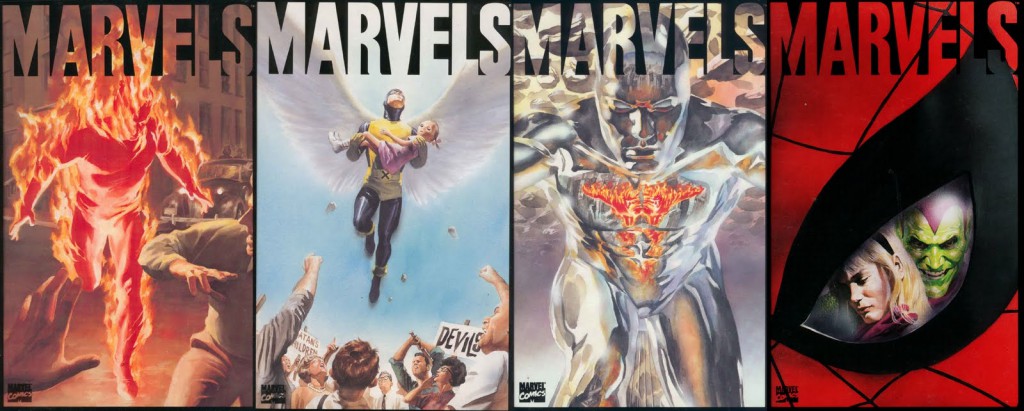
Fig. 2.10. Covers for Marvels, a four-issue limited series written by Kurt Busiek and painted by Alex Ross in 1994.

Fig. 2.11. Cover gallery for Civil War: Front Line #1-11 (2006-2007) and The Road to Civil War Checklist.
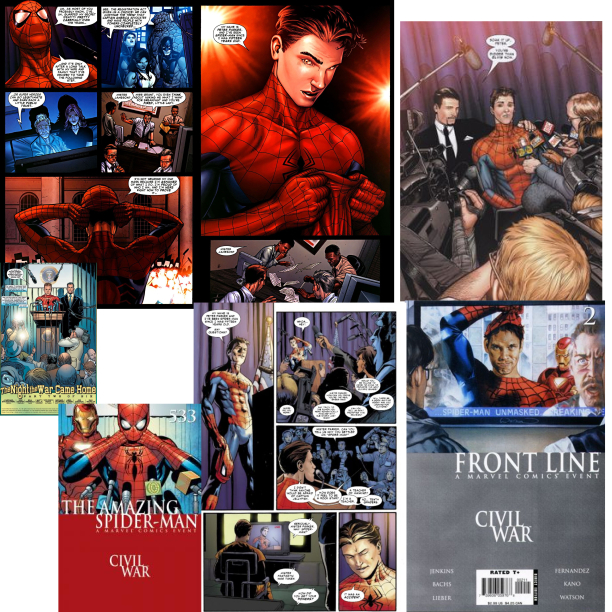
Fig. 2.12. Civil War and Spider-Man Unmasked. Clockwise from top left: a.) Top row all interior art from Civil War #2 when Peter Parker unmasks as Spider-Man (2006), b.) Cover of Civil War: Front Line #2 (2006), c.) Interior art from Civil War: Front Line #2 (2006), d.) Cover of The Amazing Spider-Man #533 (2006), e.) Interior art from The Amazing Spider-Man #533 (2006).

Fig. 2.13. X-Men: Deadly Genesis collage.
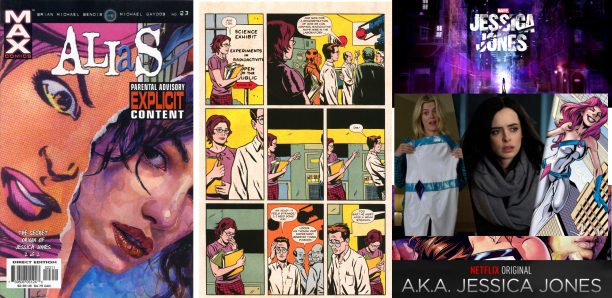
Fig. 2.14. Alias and Jessica Jones. From left to right: a.)Cover of Alias #23 (2003), b.) Interior art from Alias #22 (2003) in which Jessica Jones intersects the accident that transforms Peter Parker into Spider-Man, c.) scenes from the 2015 Netflix series Jessica Jones that reference Jessica’s brief costumed adventures as Jewel in the Alias comic.
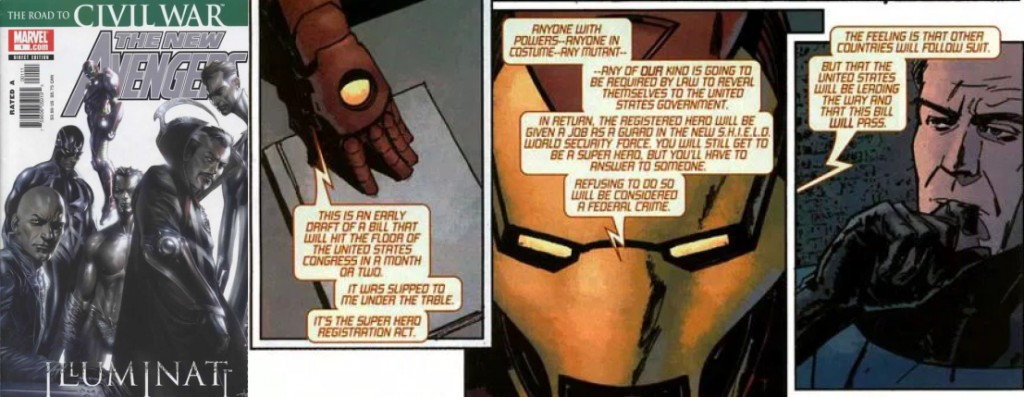
Fig. 2.15. Marvel’s Illuminati. Cover of The New Avengers: Illuminati Special #1 (2006) and interior art.

Fig. 2.16. Possible Worlds. (Left) Covers of Marvel’s 2003 limited series 1602 by Neil Gaiman and Andy Kubert. (Right) Covers from Marvel’s Ultimate line of titles in 2011.
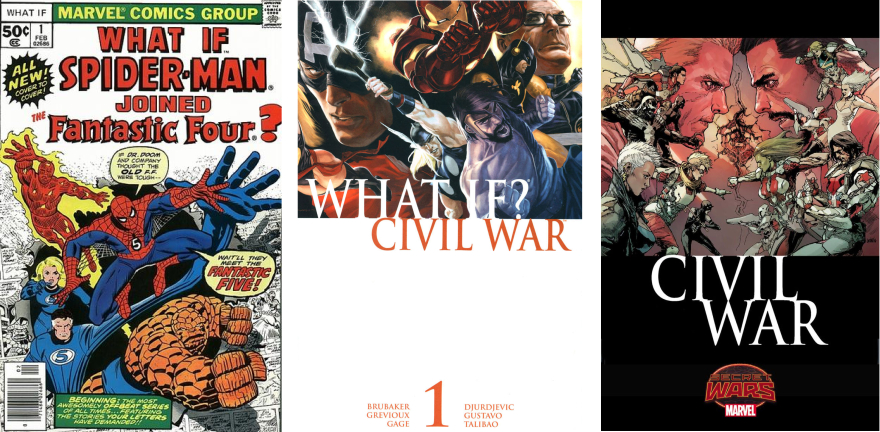
Fig. 2.17. What If…? From left to right: a.) Cover of What If? #1 (1977), b.) Cover of What If? Civil War #1 (2007), c.) Promotional image for Secret Wars: Civil War (2015).
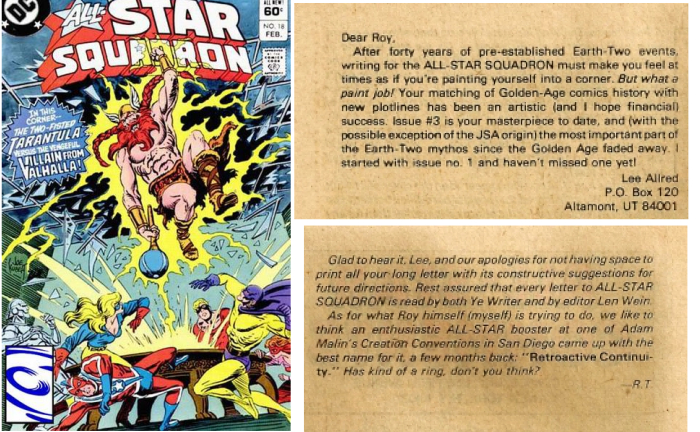
Fig. 2.18. Etymology of Retroactive Continuity. (Left) Cover of All-Star Squadron #18 (1983). (Right) Correspondence between writer Roy Thomas and fan Lee Allred from the letters page of All-Star Squadron #18.
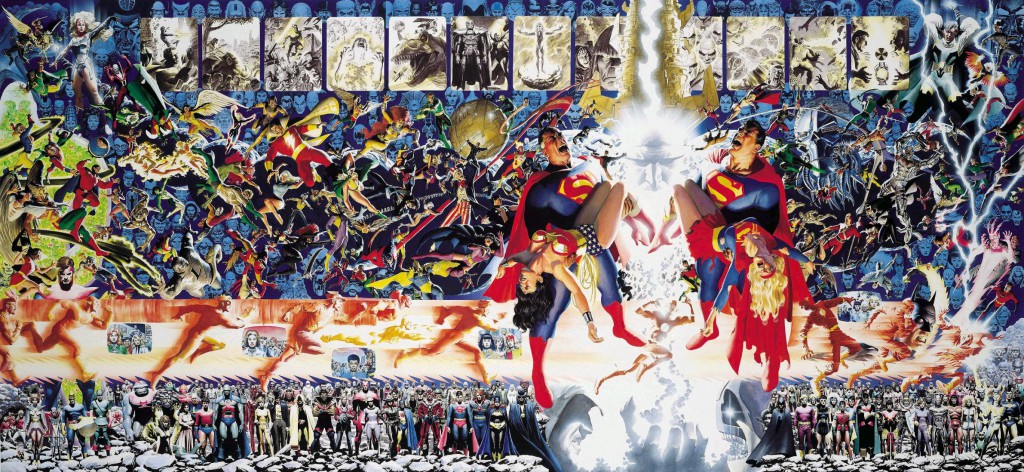
Fig. 2.19. Cover to the collection Crisis on Infinite Earths: The Absolute Edition with illustration by Alex Ross.

Fig. 2.20. Collage of Magneto and Jewishness over time.
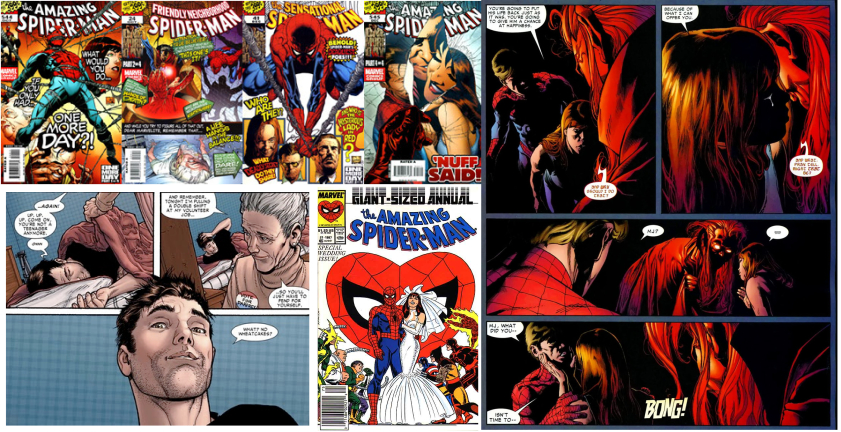
Fig. 2.21. Spider-Man: One More Day. Clockwise from top left: a.) Covers of The Amazing Spider-Man #544, Friendly Neighborhood Spider-Man #24, The Sensation Spider-Man #41, and The Amazing Spider-Man #545 in which One More Day was first serialized in 2007, b.)Interior art of The Amazing Spider-Man #545 during which Peter and MJ make a deal with Mephisto, c.) Cover of The Amazing Spider-Man Annual #21 (1987), d.) At the conclusion of the story Aunt May is alive and Peter is no longer married to Mary Jane.

Fig. 2.22. Spider-Man: One Moment in Time (O.M.I.T.) Clockwise from top left: a.) Covers of The Amazing Spider-Man #638-641 in which One Moment in Time was first serialized in 2010, b.) O.M.I.T. reveals MJ’s offer to Mephisto that was obscured in One More Day, c.) Cover of What If…? #20 (1990) that first postulated “What if the Amazing Spider-Man had not married Mary Jane?” d.) Cover of Secret Wars: The Amazing Spider-Man: Renew Your Vows #1 (2015) in which Peter and Mary Jane remain married and have a daughter.
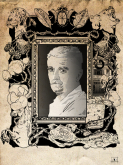
Fig. 2.23. Illustration of William Faulkner.
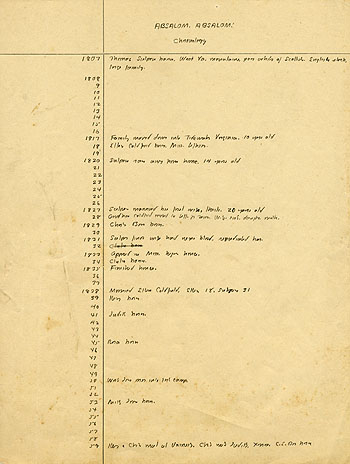
Fig. 2.24 First page of a two page chronology Faulkner prepared for Absalom, Absalom! courtesy of the William Faulkner Collection, Department of Special Collections, University of Virginia. See more at: http://twain.lib.virginia.edu/absalom/wfchronhp.html
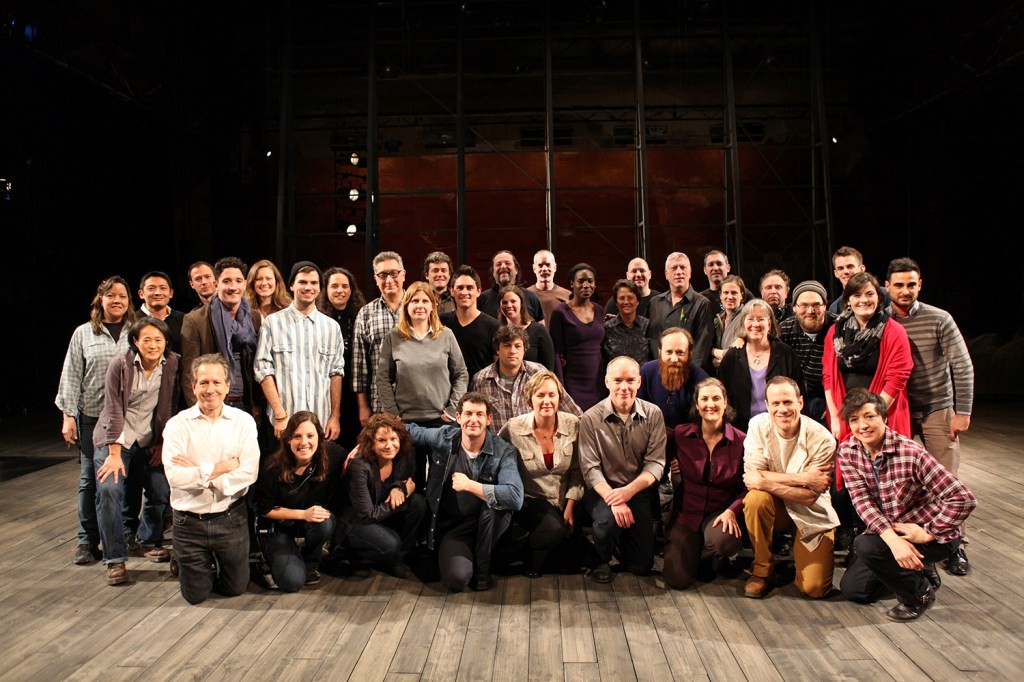
Fig. 2.25. The Laramie Project Cycle at the Brooklyn Academy of Music, photo by Julieta Cervantes, courtesy Tectonic Theater Project.
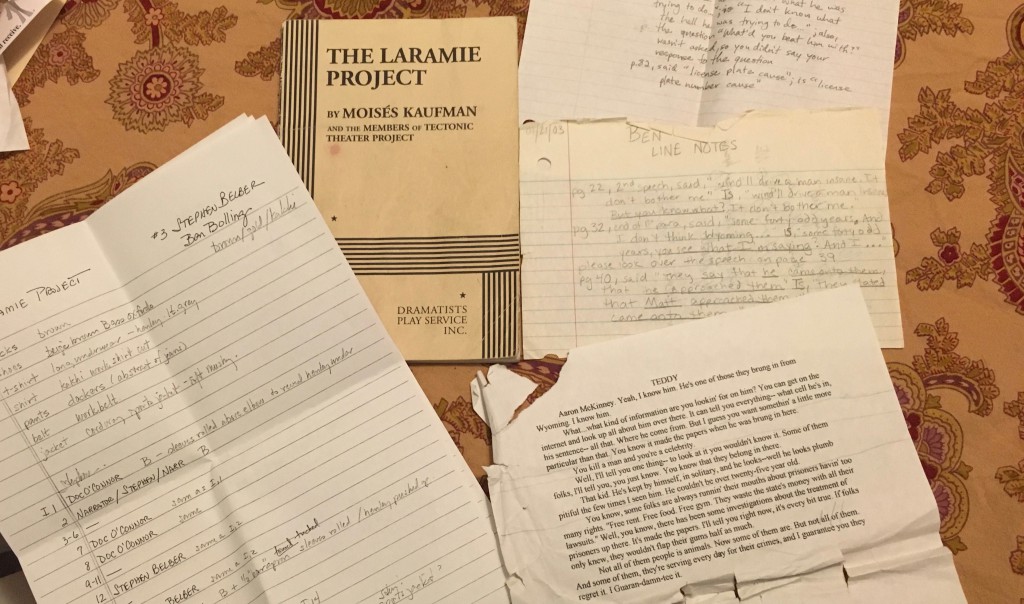
Fig. 2.26. My copy of The Laramie Project from the University of Virginia Department of Drama’s 2003 production with line notes, dresser notes, and text of a monologue I prepared after interviewing a guard at Wallens Ridge State Prison.